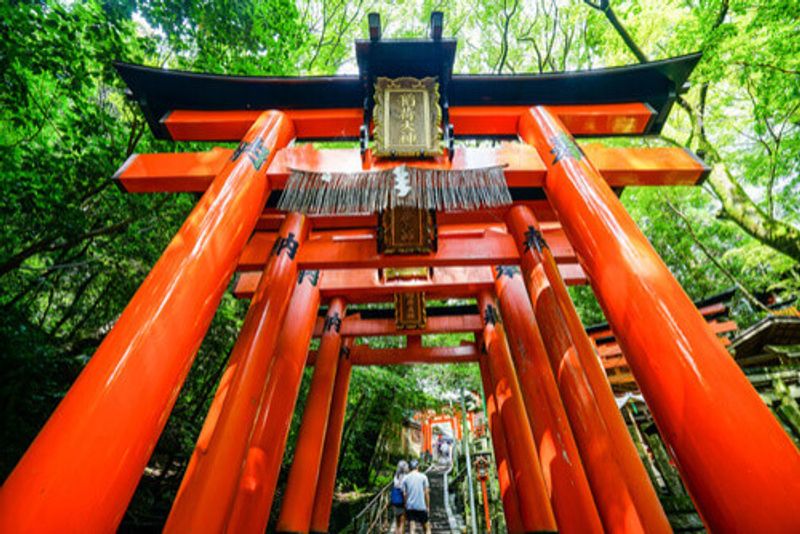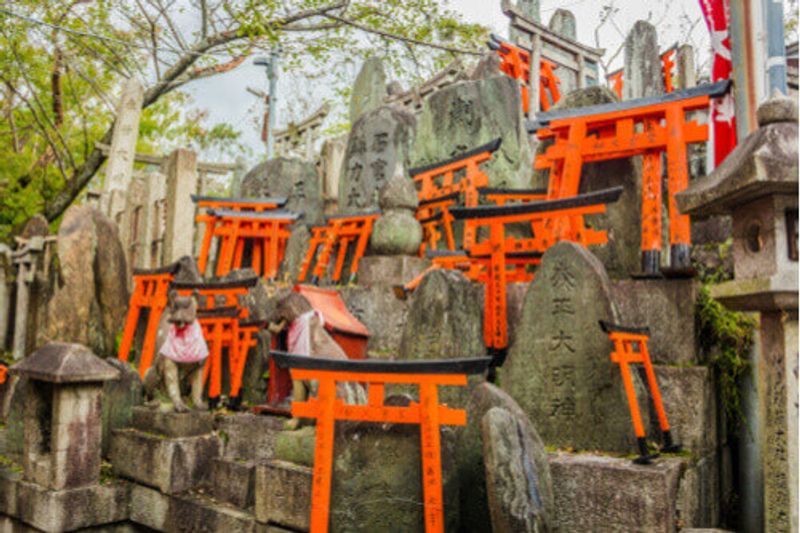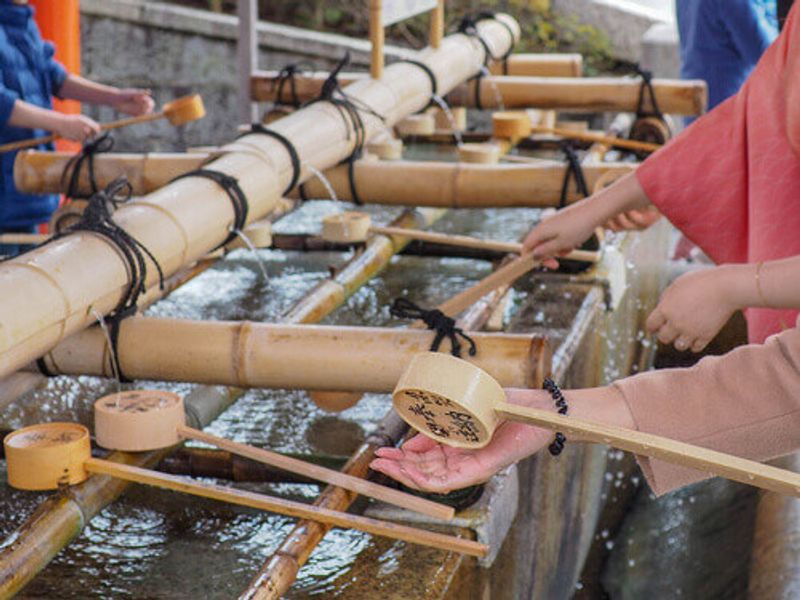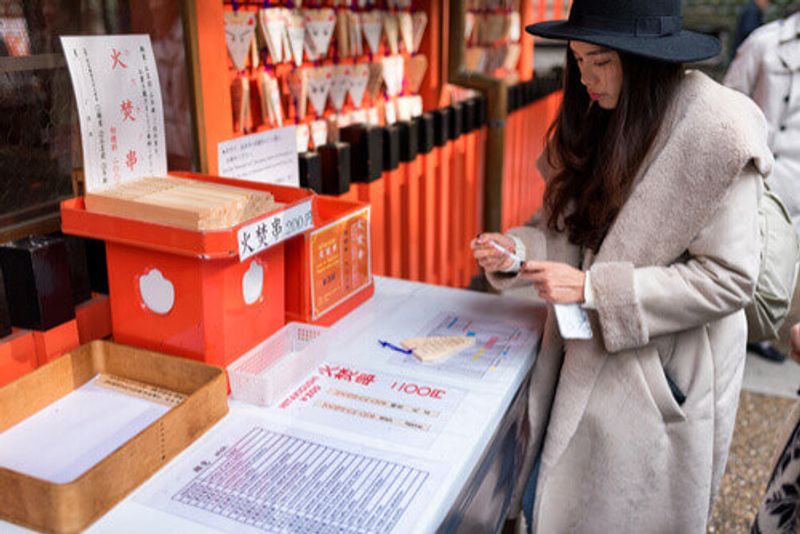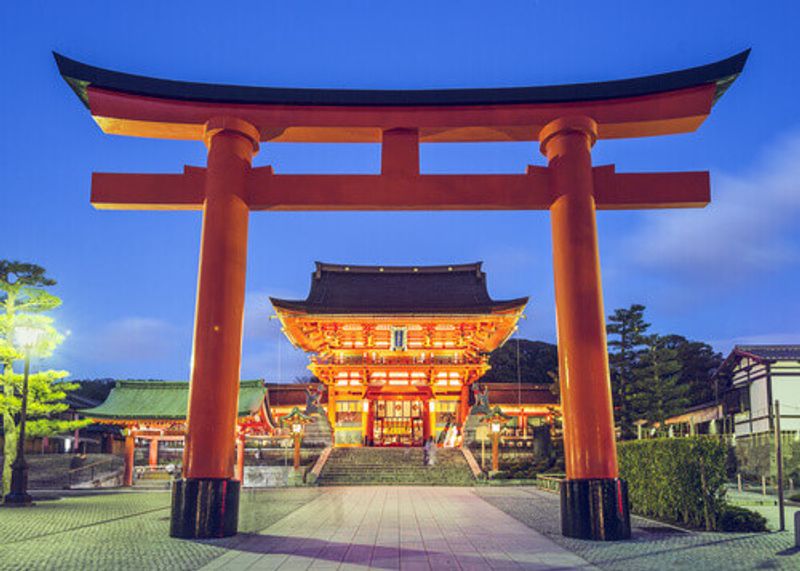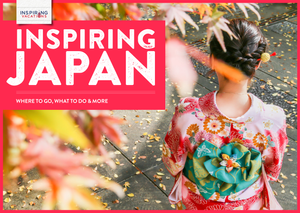One of Kyoto’s most photographed sights is also its most sacred
The Fushimi Inari Shrine (or Fushimi Inari-Taisha) is one of the largest in Japan, and among Kyoto’s most visited attractions, but it wasn’t always such a hotspot. In fact, the site was relatively tourist-free until the 2005 release of Memoirs of a Geisha, where it features in one of the film's pinnacle scenes. In the years since the shrine has exploded in popularity and when you lay eyes on it yourself, you’ll quickly understand why.
Fushimi Inari-Taisha features more than 10,000 torii gates that wrap around the base of Mount Inari and continue deep into the mountain. The gates symbolise a division between the regular world and the sacred and are a striking shade of red to ward off evil spirits. The colour is also affiliated with the harvests that Inari gives to the Japanese people.
EXPLORE OUR INSPIRING JAPAN SMALL GROUP TOURS HERE
Inari, the deity for which the shrine was dedicated, is the god of rice, sake and prosperity. Although he is one of eight million kami (deities), Inari is one of the most admired and Fushimi Inari-Taisha functions as the head shrine to more than 30,000 others devoted to him across Japan. Officially, Fushimi Inari dates back to the 8th century, but unlike many of Japan’s most sacred sites, new torii are added regularly. Gates are donations to Inari and the inscriptions detail the year and name of their sponsor. Even tourists can gift a torii, if they have a spare one million yen (AU$12,736).
The Fushimi Inari shrine is easily accessible from anywhere in Kyoto. The site is unmissable, with a towering red torii and the Romon Gate, which signifies the entrance to the shrine. Continue past temples and sculptures to the chozuya (water ablution pavilion) where it’s respectful to wash your hands with a hishaku (ladle) before proceeding to the most spectacular part of the shrine, the senbon torii (thousands of torii). Walking through the vermillion tunnel of gates, shrouded by trees and away from the hum of the city, feels entirely otherworldly. The colour of the gates changes depending on light and time of day, so when the crowds subside, stick around to see them glow golden in the setting sun.
Throughout the site, you’ll see many foxes. From sculptures to wooden ema (wishing) plaques with fox faces, the animals are scattered everywhere. Foxes are said to be spirit messengers of Inari. While souvenirs typically attract tourists, it’s usually Japanese visitors that buy fox-related memorabilia which is thought to be lucky.
Although you'll have to share the shrine with other tourists, Fushimi is an unmissable stop on any visit to Kyoto. For the best chance of capturing a perfect photo of the senbon torii without people, head to the shrine early in the morning or after sunset. Unlike most sites in Kyoto, Fushimi Inari is open 24 hours and come nightfall, most people will have left, reverting the site back into the peaceful sanctuary it was intended to be.
